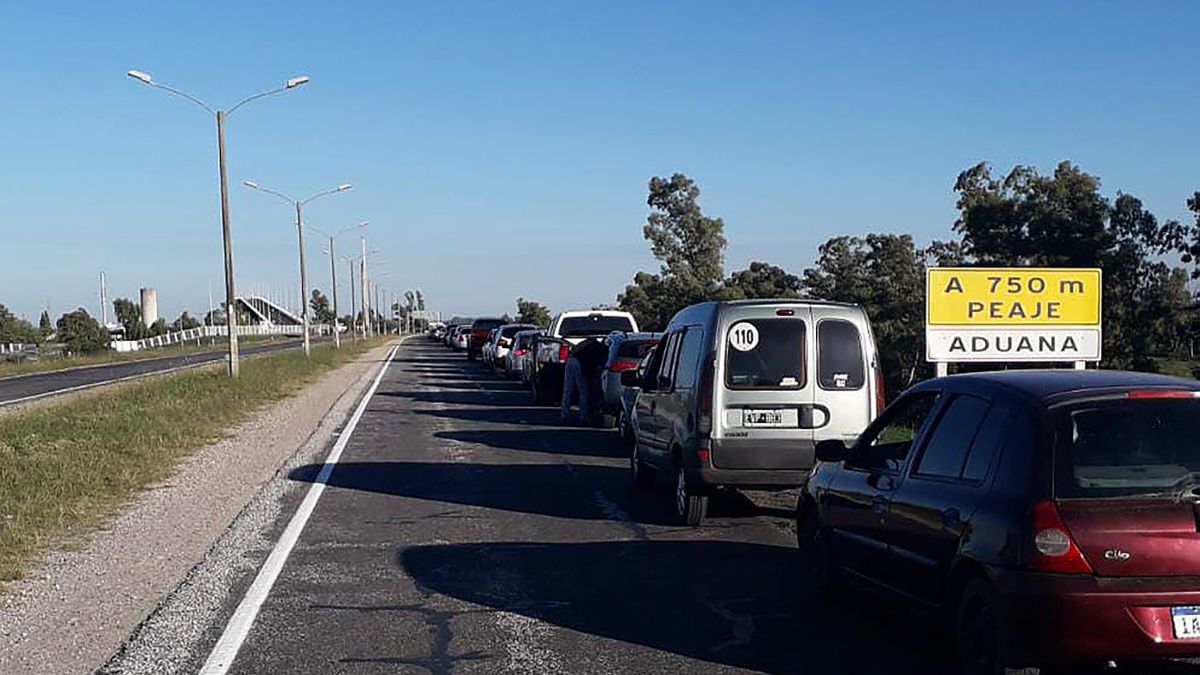For the president of the Chamber of Commerce and Services of Uruguay (ccsuy), Julius Caesar Lestidothe problematic situation, product of the exchange difference with ArgentinaIt is highly worrying. Today it is not only installed in the bordering departments, but also in the center and south of the country, he warned in dialogue with scope.com. Paying attention to the announcement of new measures by the national government, businessmen do not rule out a strong increase in the number of shipments to unemployment insurance.
What has been happening is having a very strong impact on the issue of trade, especially in businesses on the border with Argentina, such as Leap, paysandu, Black river. But also this is slipping to other parts of the countryalready impacts the center and south of the country. The amount of merchandise that is entering is hitting very hard and furthermore, it is no longer just people from the border who cross and buy, but all Uruguayans. The weekend of May 1, long weekend, approximately 70,000 Uruguayans crossed over to the Argentine sideand there everything that is bought from that side, I don’t know “spend“.
Today the Uruguayan works on this side and spends on the Argentine side. That happens in Salto, for example. Today we are reaching the impact in other areas of consumption, there are people who cross the bridge to go to the hairdresser’sdoctor, dentist, etc., There are Uruguayans who have gone to live on the other side of the border. This is hitting very hard and above all it affects retail businesses in some areas, such as cleaning products, personal hygiene, etc.
— Given this, what short-term solutions do you see? Have they discussed it with the authorities?
We know that there is no single solutionWith this difference that remains today, it is very difficult. Measures have been taken, including I understand that the government in these hours is going to announce something. Here you have to somehow find the discouragement, that people do not go to Argentina to buyOf course it is very difficult. There are good things, the products are good and the difference is very big.
Have you asked for anything in particular?
We have been working with the authorities, but above all accompanying. First go to visit and understand the problems of what is happening in the area, supporting and accompanying the most affected shopping centers. What we have done is reinforce the proposals that have been made to us by the shopping centers. There is no single idea There is not a magic formulaare a set of measures that help alleviate.
There have been some benefits and some tax discounts in what has to do with fuels, and measures are still being sought, but it is very difficult with these differences, despite the fact that they are constantly working. In the department of Salto we have about 13% unemploymentin Paysandú about 12% and with an informalism that exceeds 30%. In Artigas about 40% informalism.
— Do you think that the number of submissions to unemployment insurance will increase, and that in that case some type of differential unemployment insurance should be considered?
I think you have to study how the announcements come, obviously, things will happen if this situation continues.
estido.JPG
Keys to the situation
The high cost of living in Uruguay
Uruguay has a cost of living that is 93.3% higher than that of Argentinaaccording to the latest report from Numbeo, a site specialized in comparing the costs of living in different cities and countries around the world. A typical family has expenses of $2,923.30 per month (not counting rent), that is to say, 113,250.10 Uruguayan pesos. While in the neighboring country the estimated costs of living are $1,530.60 without rent.
Dollar rates and the exchange difference
for uruguayans, buying in Argentina is 56% cheaperaccording to the latest report on Border Price Indicators (IPF) of the Economic Observatory of the Catholic University of Uruguay (ICU), corresponding to March.
The biggest price gap between jump and Concord occurred in the item Miscellaneous Assets, where the Uruguayan city was 212% higher than the Argentine. Acquire a deodorant on the Uruguayan side of the border can cost up to 329% more to do it in an Argentine store. The hygiene basket is the one with the greatest difference: in the case of shampoo there is a gap of 265%; for toothpaste, 194%; for toilet soap, 188%; and for toilet paper, 115%.
Live in Argentina and work in Uruguay
So far this year, More than 2,000 Uruguayans signed rental contracts in the Argentine cities of Colón and Concordia. According to specialized sources, these are people who carry out their working lives in Uruguay and cross the border daily.
Why is that? Rental prices in the country are high. Although the increases remain below inflation, they represent a considerable expense relative to the income level of Uruguayans.
According to the Numbeo benchmark, In March renting in Uruguay was 127% more expensive than doing it in Argentina. While, Montevideo it has the most expensive square meter in all of Latin America: $3,146according to the Finance Research Center (CIF) of the Business School of the Torcuato Di Tella University in conjunction with Zonaprop.
A blow to the economy of the Uruguayan coast
only in jump, 170 shops closed in the last monthsas warned by the mayor Andres Lima, who directly linked it to the exchange difference with Argentina and purchases on the other side of the border. “There will be more shops closed, more unemployment and more Uruguayans will go to Entre Ríos“, held.
For months, unemployment in the border area has been higher than the national median, without any change in sight. According to the latest data from the Statistics National Institute (INE), unemployment in Salto exceeded 14%, something that has no recent record. Unemployment also rose in Artigas and Paysandú (12.7% and 10.5%, respectively), while in Río Negro it fell, but due to a drop in the activity rate. It should be remembered that the national average unemployment rate in February was 8.1%.
Source: Ambito




